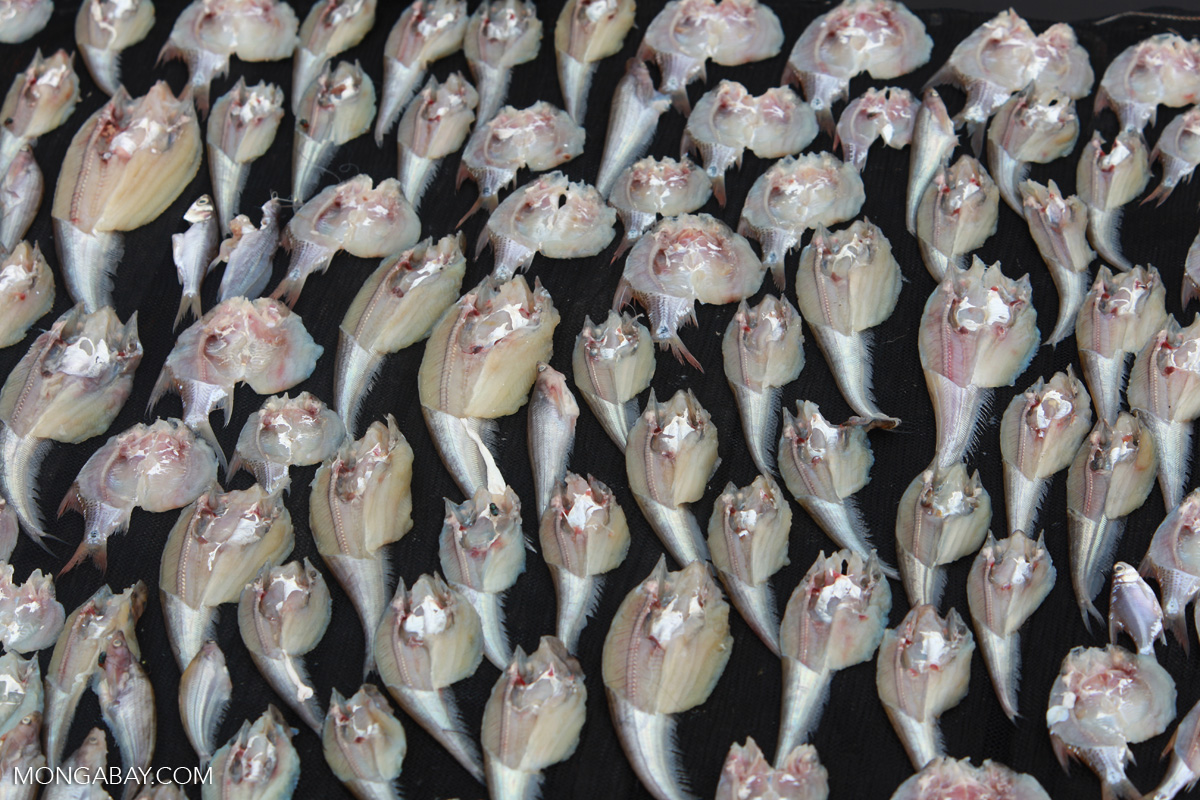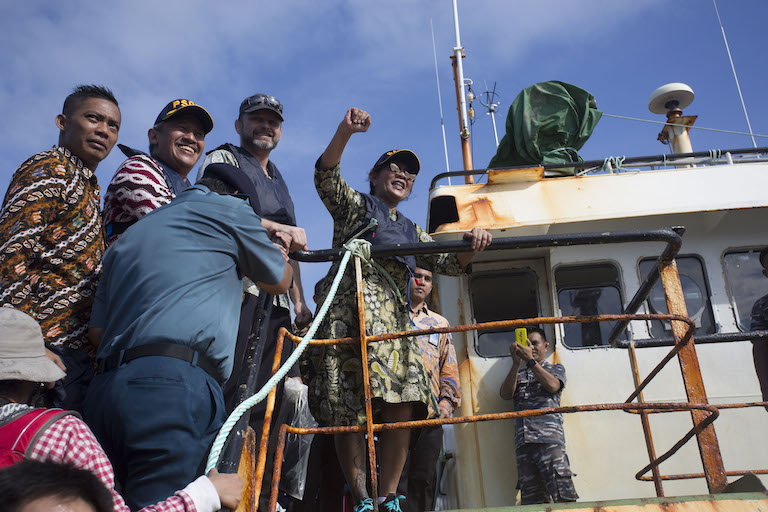- Since taking office in 2014, one of Indonesian President Joko Widodo’s signature policies has been to explode fishing boats that trespass in the archipelagic country’s waters (after evacuating the crews). One hundred and seventy-six vessels have already been destroyed in this way.
- Now, the government is changing its policy. Beginning on August 17, Indonesia’s independence day, the boats will be sunk in such a way as to promote the formation of coral reefs.
- A fisheries ministry official said foreign countries had already gotten the message, so there was no need to keep exploding boats.
- Another reason for the change is an accident that happened with the MV Viking, which leaked oil onto a popular beach in southern Java after it was scuttled in March.
To mark its independence day on August 17, Indonesia’s fisheries ministry will scuttle 34 fishing boats — from Vietnam, Philippines, Thailand, Malaysia and China — all caught fishing with faulty documents in Indonesian waters. But instead of blowing up boats like last year, this year the boats will be sunk to build fish habitat alongside the anti-poaching action.
The boats will be sunk in Indonesia’s remote and coral-and-fish-rich marine borderlands in yet another signal to Indonesia’s regional neighbors to curb their poaching fishermen. This time the sinking locations carry a symbolic territorial message as well.
Nine vessels will be totalled off the waters of Northern Maluku, Sulawesi and Morotai — dileneating Indonesia’s northern border with the restive southern Philippines where pirates and militants ply the waters. Seventeen will be destroyed in the waters off Natuna, Tarempa and Batam — Indonesia’s territorial claims in the South China Sea. Three will be submerged beneath the waters of eastern Borneo where southern Filipino terrorists kidnapped the crew of two indonesian coal trampers. Four will be sunk in western Papua.
This continues the Indonesian President Joko “Jokowi” Widodo’s “shock therapy” policy to seize and sink foreign vessels caught illegally fishing in national waters. But instead of piling low-intensity explosives on the deck as the government has done to 176 other vessels caught so far, the government will unplug holes at the base of the boat and let the vessels take on water and sink to the bottom.
“To date, the demolition of illegal fishing boats with dynamite was done to deter poachers,” Diding Soetardi, a fisheries ministry public relations officer, told Mongabay. “But over time, foreign fishermen have come to understand that Indonesia is a firm enforcer of its anti-poaching laws. So there is no need to blow up more vessels. From now on, illegal vessels will be sunk by opening of sea taps so that boats can fill with water and sink of their own accord.”

Earlier this month, fisheries minister Susi Pudjiastuti herself told the press that the government was opting for the leaky hole technique over explosives to avoid the mistake made with the sinking of Nigeria-flagged ship MV Viking, a globally infamous poacher of Antarctic toothfish (Dissostichus mawsoni), a species commercially known as Chilean sea bass.
The environmentalist group Sea Shepard recorded the high-profile scuttling of the Viking with drones. The sinking was even tweeted about by President Jokowi, who dubbed the sunken vessel, placed off the shore of minister Pudjiastuti’s hometown of Pangandaran, West Java, a “monument” to national anti-poaching efforts. But three months later, beachgoers in Pangandaran woke to oily, black waves licking the town’s white sand beach.
A mix of petroleum, hydraulic oil, sewage and machine oil left in the half-submerged Viking’s ballast or engine room had leaked into the sea. The fisheries ministry sent out two technicians, one to repatch the hole and the other to extract the remaining oil from the hull. The oil was moved by barge to an oil tanker beachside and transferred to a disposal facility. An environmental assessment from the national petroleum company Pertamina estimated that 2000 liters of “waste” was removed from the boat at the end of the first day of cleanup.


The lesson was learned, according to fisheries ministry public relations officer Soetardi who indicated, “the location of the sinking will definitely be done carefully so as not to damage the surrounding environment.”
And care is key if the ministry’s scuttling policy is to achieve its stated double purpose of deterring poaching and creating new fish habitat without harming the very ecosystem it is trying to protect.
“Every time we manipulate the environment, we don’t know fully what the long term impacts will be,” said Hollie Putnam, a coral biologist based at the University of Rhode Island.
Putnam thinks the basic principles behind creating reefs from old boats are mostly sound. Coral need hard, large substrates (such as a sunken boat) to grow on. “Small pieces rolling around on the ocean bottom is not good,” she said. Time is also a component, Putnam added, as “coral also needs a layer of bio-film algae.” However, the process needs to be followed up with research and monitoring.
Michael Webster, executive director of Coral Reef Alliance, says it is also important to consider “what is in the ecosystem ahead of hand” when sinking boats.
“For example, are you moving fish away from another coral,” he said. “Also ships are not benign. They have antifouling paint, petroleum products, iron.”
